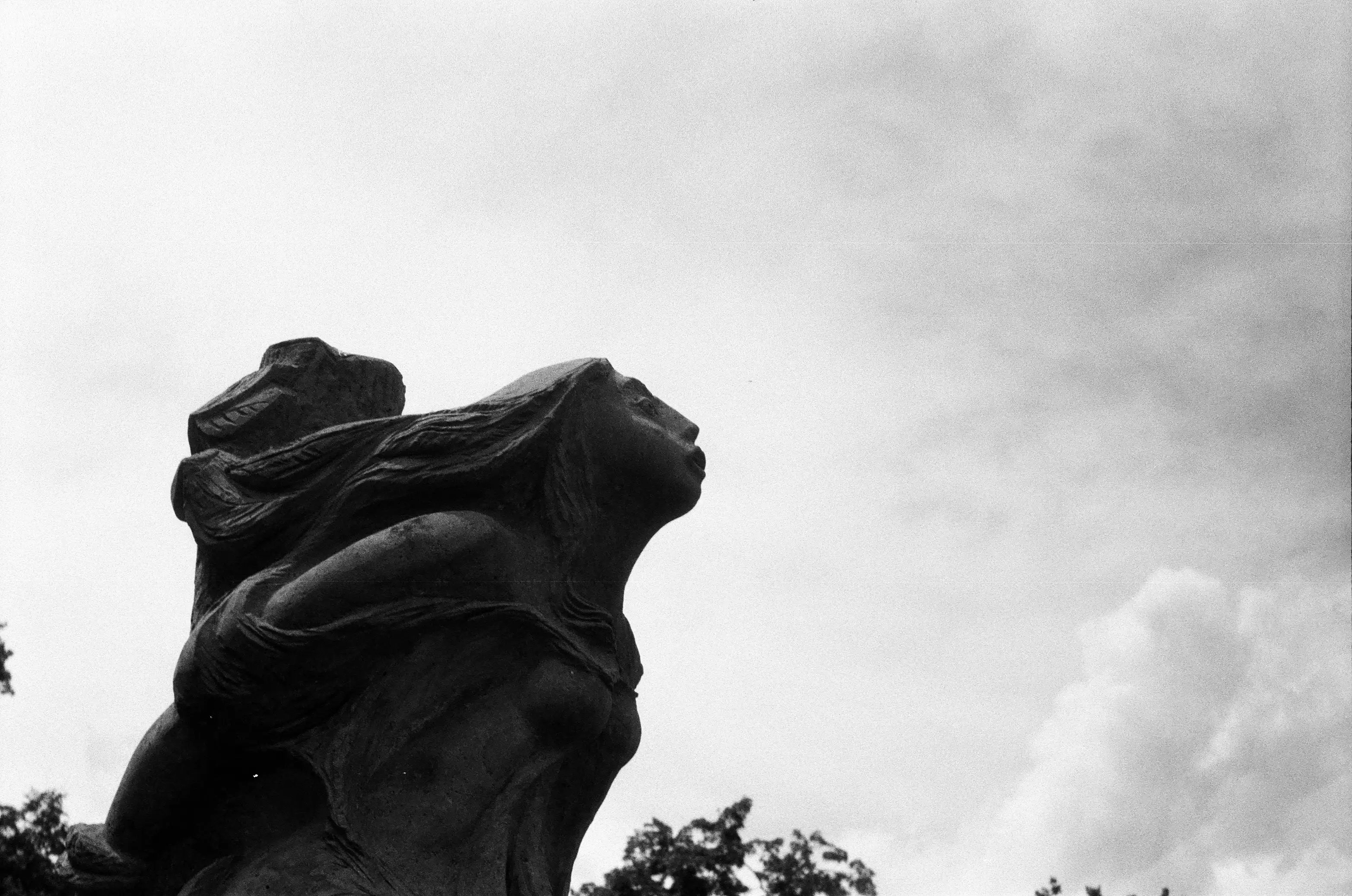The butter witch of Semlin

Even if it looks like the statue of a woman is blowing away the clouds, it has a sad background. When i visited Semlin for the first time i was surprised about the memorial against the witch hunts: a sandstone sculpture that commemorates Anna Rahns from Semlin, who was interrogated and burned as a “butter witch” in Rathenow in 1672. It was the last witch burning in the town. There were controversial discussions beforehand - including with the Protestant church1
The reconstructed story of Anna Rahns began before Easter 1672: Anna set off for Ferchesar to sell half a pound of butter. The buyer of the butter, the linen weaver Andreass Dielaß, sold it the next day to his friend, the day laborer Hans Schönemann. He noticed that the butter was full of dirt and hair and brought it back to his friend Andreas Dielaß. The dirty butter was then shown around in Ferchesar and the suspicion quickly arose that it was witch butter.2
The matter heated up and the authorities got involved and asked the Schöppenstuhl in Brandenburg3 if they can eliminate these evils and whether they would be allowed to resort to the painful procedure of torture.
No evidence was found in the archives that proves that the accused were later painful interrogated and convicted. It is highly likely that Anna Rahns was spared torture and thus a forced confession. By the time the story of the contaminated butter took place, in 1672, the peak of the witch hunts in Havelland had already passed.4
Regardless of whether she was spared or not, in my eyes the statue is still a relevant statement against ignorance and superstition and i like that there is still remembrance to this topic.
-
A typical accusation. Dirt and hair in the butter churn, eggs that have been stolen, a poor harvest in your own field while your neighbor has the best fruit, a sudden illness after evil curses had been pronounced. Anyone could be suspected, especially any woman, if she is doing better in the business than others, could very easily be suspected of being a butter witch. Does a woman always have enough butter, even though she does not even have a goat or cow of her own, or does she always have much more hay than her neighbors, even though they have more cattle in the stables, then she is definitely a butter witch. The usual explanation was that the witch gazes into the future or performs a butter prayer and gets the butter from someone else’s churn into her own. The logical explanation that cows and goats are sensitive animals and give more milk if they are milked by someone they know was too far fetched although daily done by dairy maids. Most witch trails were just initiated due the envy of neighbours. ↩︎
-
If a lower court in the Brandenburg province was dealing with such a case, it had to turn to the Schöppenstuhl to obtain a legal opinion. The Brandenburg Schöppenstuhl was made up of several lay judges or Schöppen who had to decide whether harmful magic really existed and what evidence had to be provided for it. ↩︎
-
Detailed information can be found in “Anna Rahns” by Heike Brett and Martin Keune in the Semliner Hefte 7, Semlin 2012. ↩︎